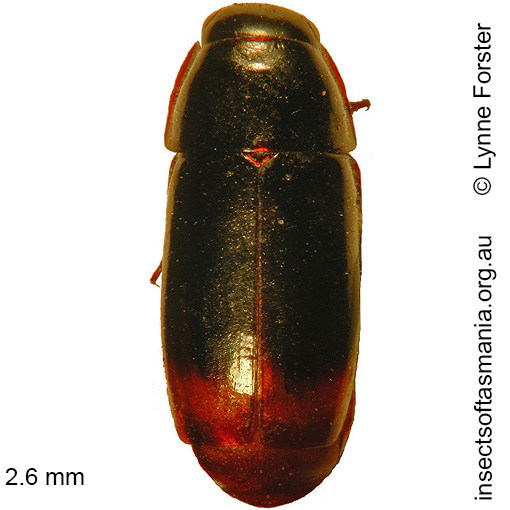
Adelotopus haemorrhoidalis (a species of ground-beetle)
Basis for Tasmanian occurrence
TMAG collections
Classification
Suborder: Adephaga
Superfamily: Caraboidea
Family: Carabidae
Subfamily: Pseudomorphinae
Morphology
Flightedness: winged and assumed capable of flight
Source literature on morphology and taxonomy (*primary taxonomic source, where identified):
Source literature on morphology and taxonomy (*primary taxonomic source, where identified):
Baehr, M. (1997). Revision of the Pseudomorphinae of the Australian Region. 2 (Coleoptera: Carabidae). Spixiana Suppl. 23: 512 pages.
*Erichson, W.F. (1842). Beitrag zur Insecten-Fauna von Vandiemensland, mit besonderer Beruecksichtung der geographischen Verbreitung der Insecten. Nicolai’schen Buchhandlung 8(1): 379 pages.
Sloane, T.G. (1920). The Carabidae of Tasmania. Proc. Linn. Soc. NSW 45: 113-178.
Ecology
Association with dead wood or old trees: obligately saproxylic
Ecological attributes: — Affiliated with burnt tree-wounds (Harrison, 2007) — May occupy logs or trunks of Eucalyptus obliqua, at least temporarily, since found having emerged within six years of felling (Grove et al., 2009).
Collection method(s) for TMAG material: — Baited trapping (funnel trap) — Emergence trapping from log of Eucalyptus obliqua — Hand collection (substrate not specified) — Knockdown fogging of canopy of Eucalyptus obliqua — Knockdown spraying of bark of Eucalyptus obliqua — Pipe trapping — Pitfall trapping — Sticky trapping on Eucalyptus obliqua — Vane trapping.
Source ecological literature:
Harrison, K.S. (2007). Saproxylic beetles associated with habitat features in Eucalyptus obliqua trees in the southern forests of Tasmania. PhD thesis, Dept. of Zoology, Univ. of Tasmania, Hobart.

